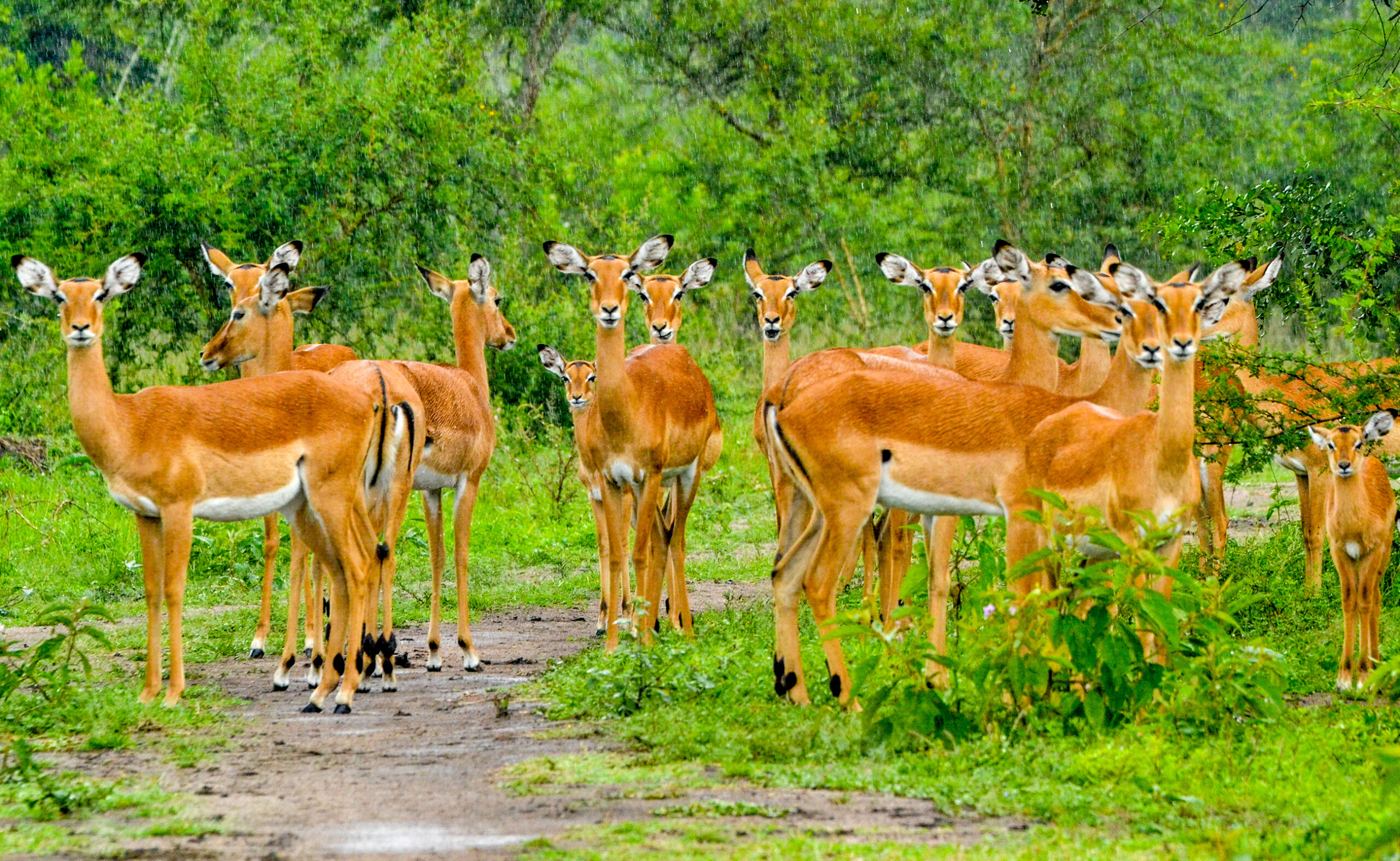Semuliki National Park sprawls across the floor of the Semliki Valley on the remote western side of the Rwenzori Mountains. The park is dominated by the easternmost extension of the great Ituri Forest of the Congo basin, one of Africa’s most ancient and biodiverse forests that survived the last ice age around 12-18,000 years ago. The Semuliki Valley is unique in that it contains numerous features associated with Central rather than Eastern Africa. For example, the thatched huts are shaded by West African oil palms, the Semuliki River which forms the international boundary, is a miniature version of the Congo River, and the forest is home to numerous Central African wildlife species. The park provides a rare glimpse into the wildlife of Central Africa without having to leave Uganda.
The reserve is home to a total of 53 mammal species and over 400 bird species, with some being endemic to the park and the Congo basin. Wildlife enthusiasts can expect to see primates such as the black-and-white colobus, red-tailed monkey, and grey-cheeked mangabey. The park is also home to forest elephants, buffaloes, bushbucks, and a few species of duikers. The birdlife in the park is particularly impressive, with a variety of raptors, forest and waterbird species, and the elusive shoebill stork.
The Batwa pygmy community, who originally come from the Congo, also call this area home. Visitors can experience their unique culture and way of life through cultural performances and village walks. The park’s hot springs are another attraction worth visiting. The Sempaya hot springs consist of two separate springs, one male and one female, and are said to have medicinal properties. Visitors can take a guided walk to the springs and learn about their history and significance in the local culture.


